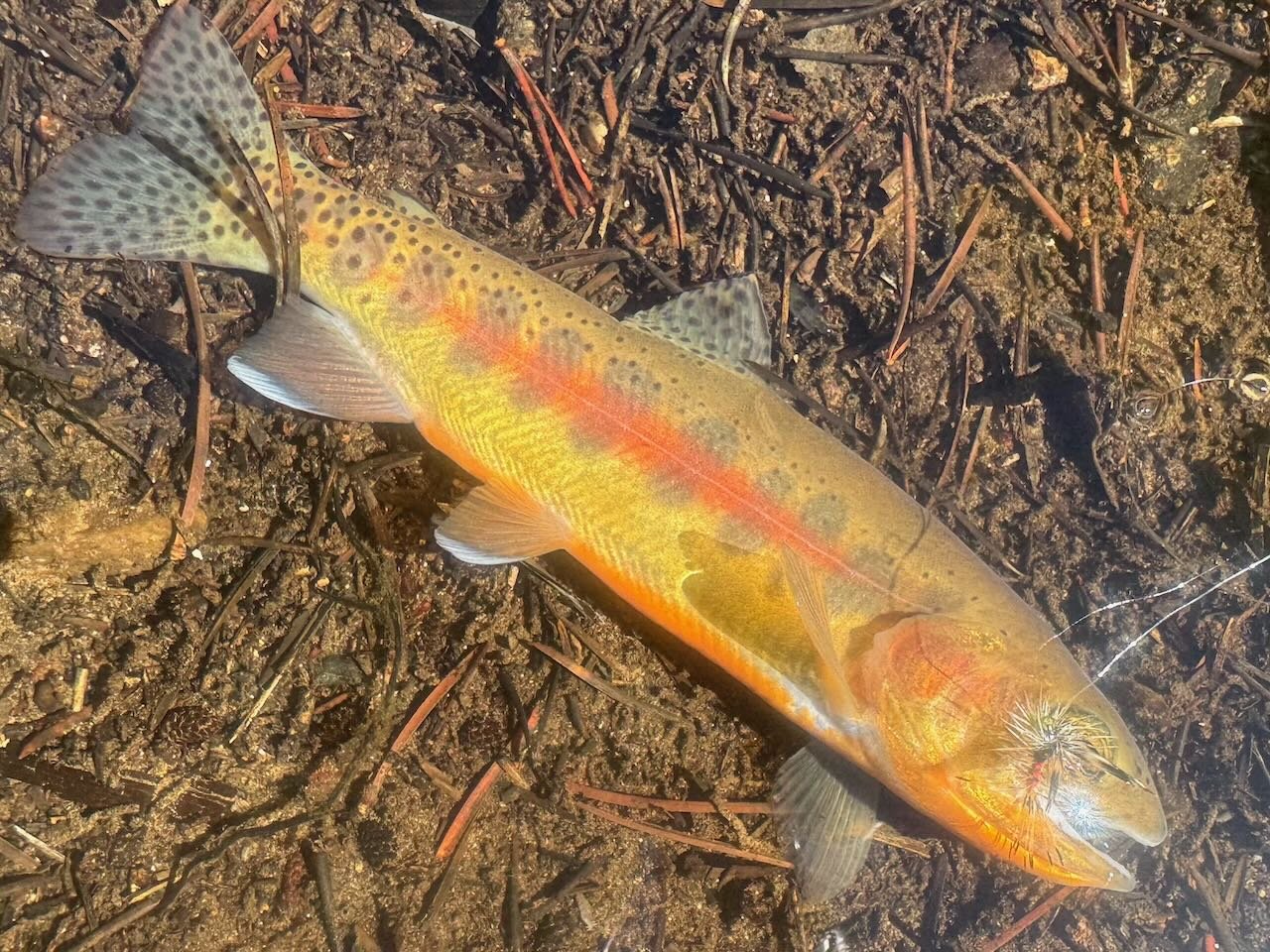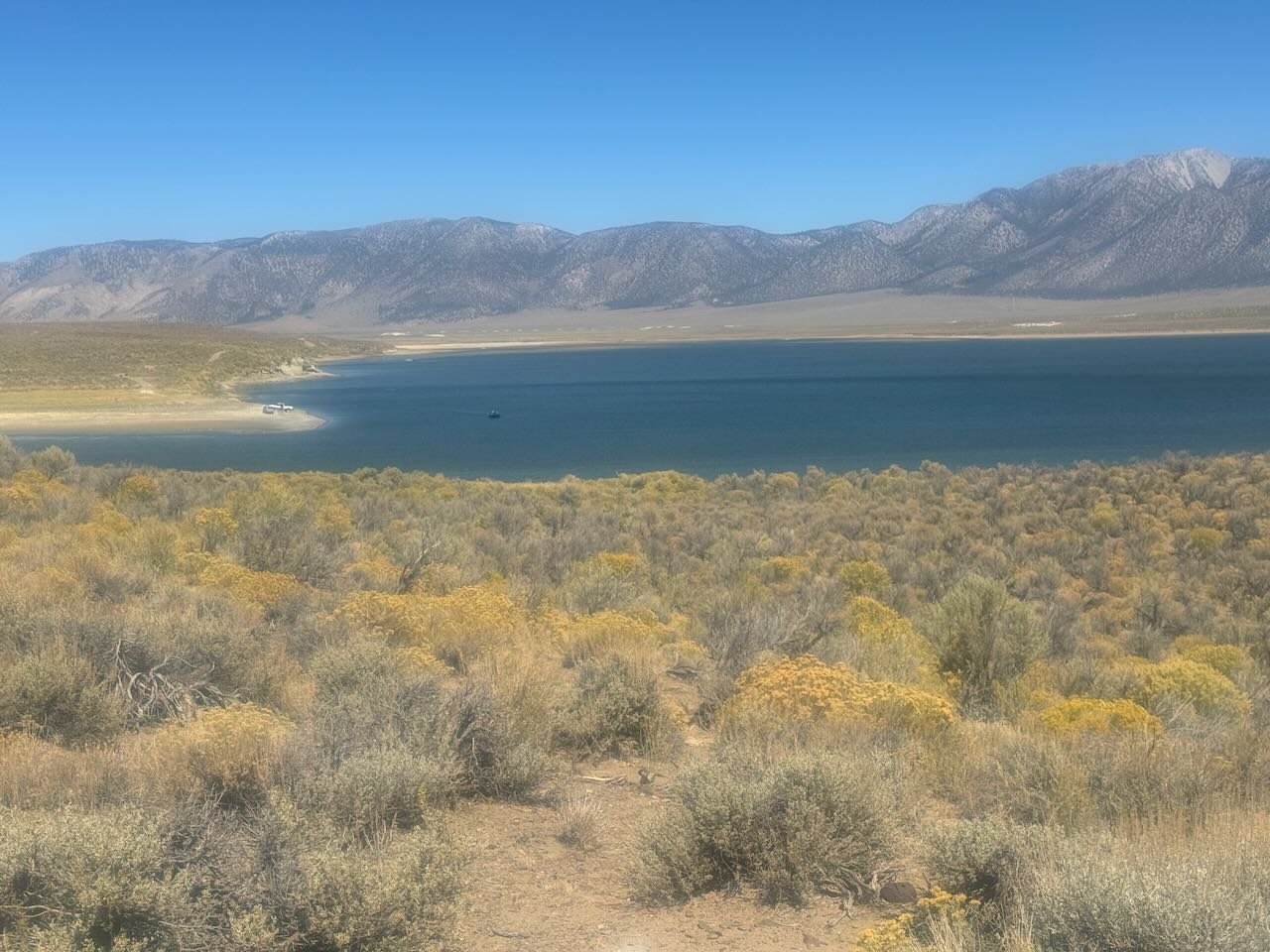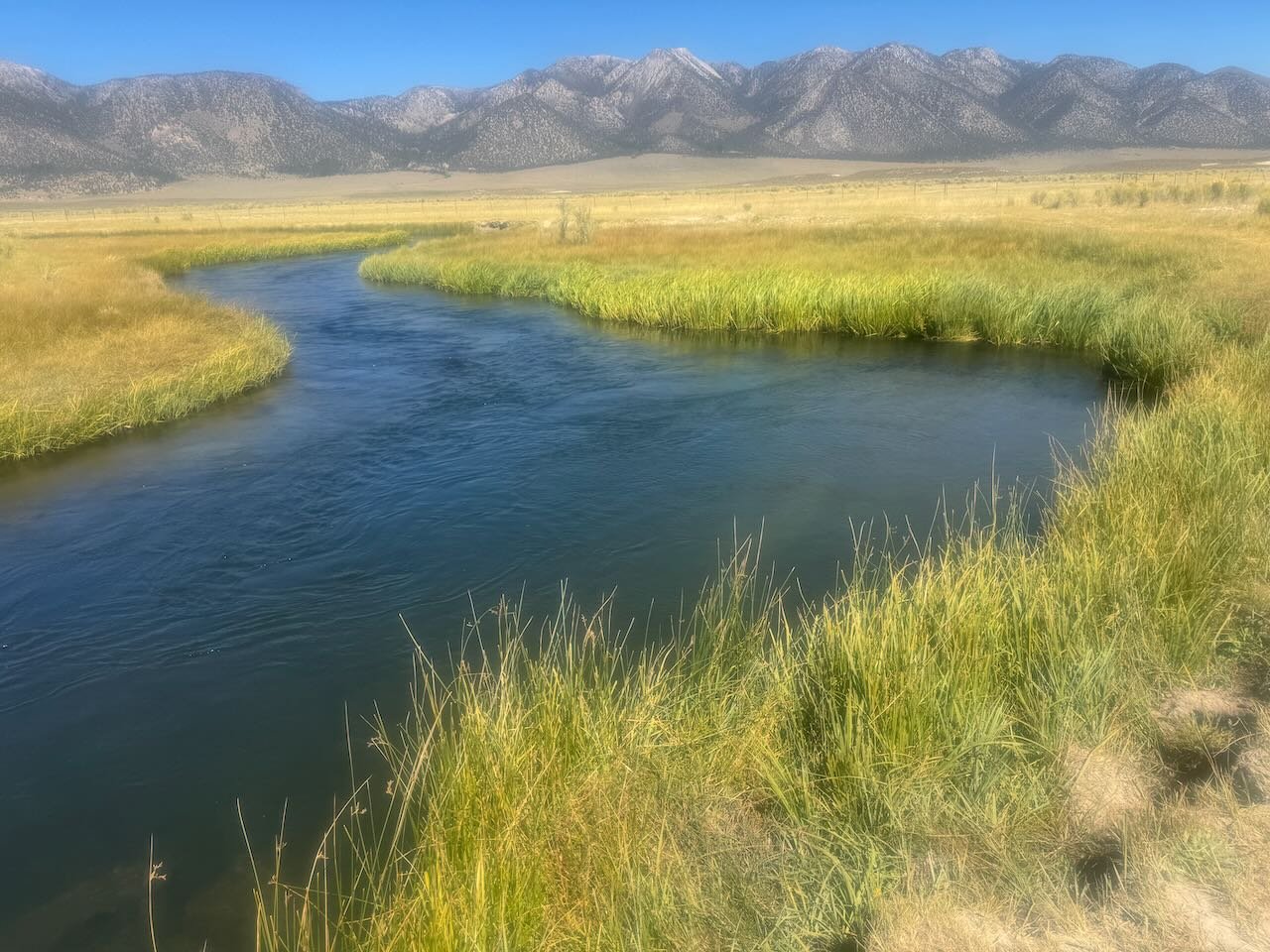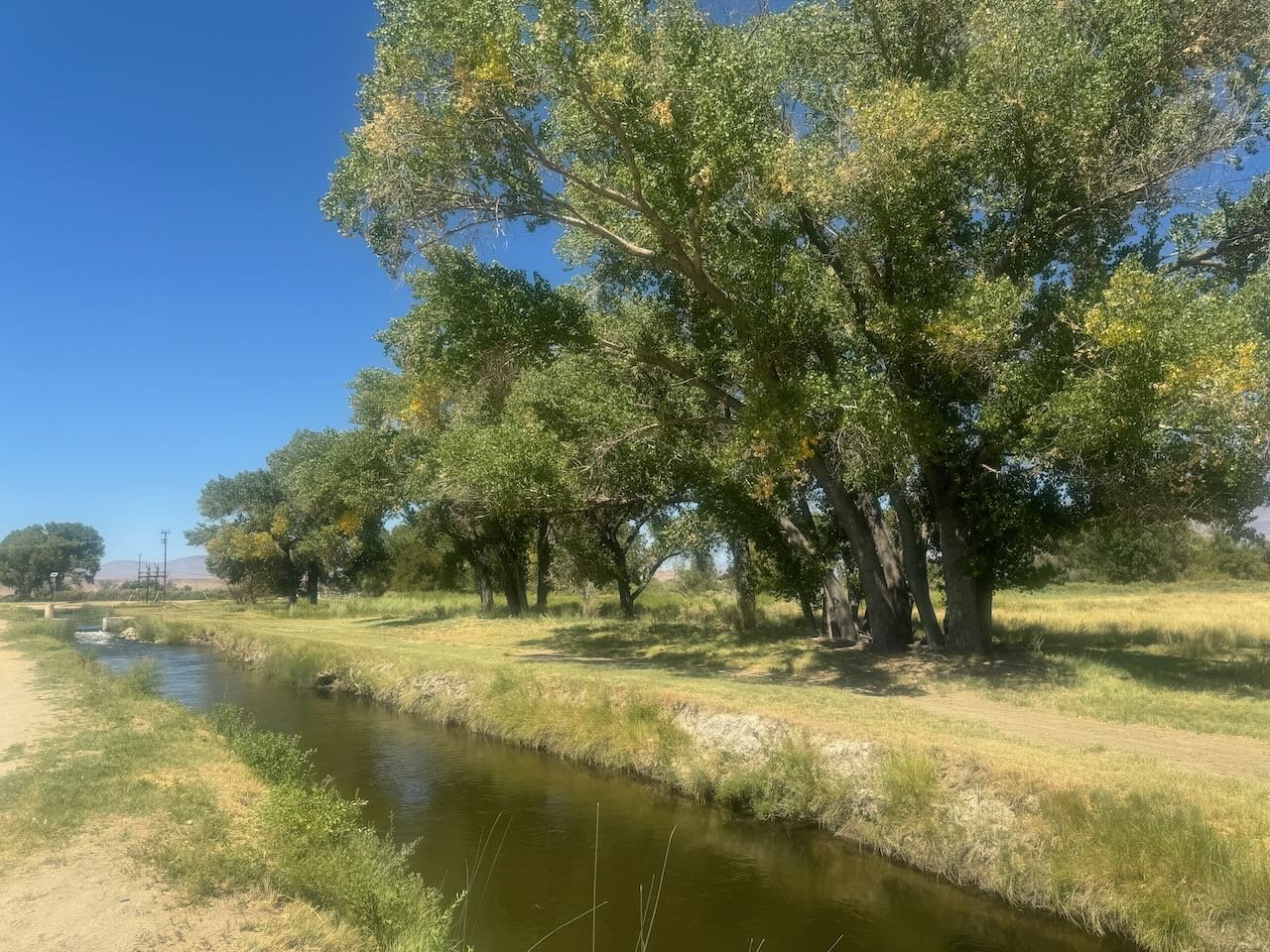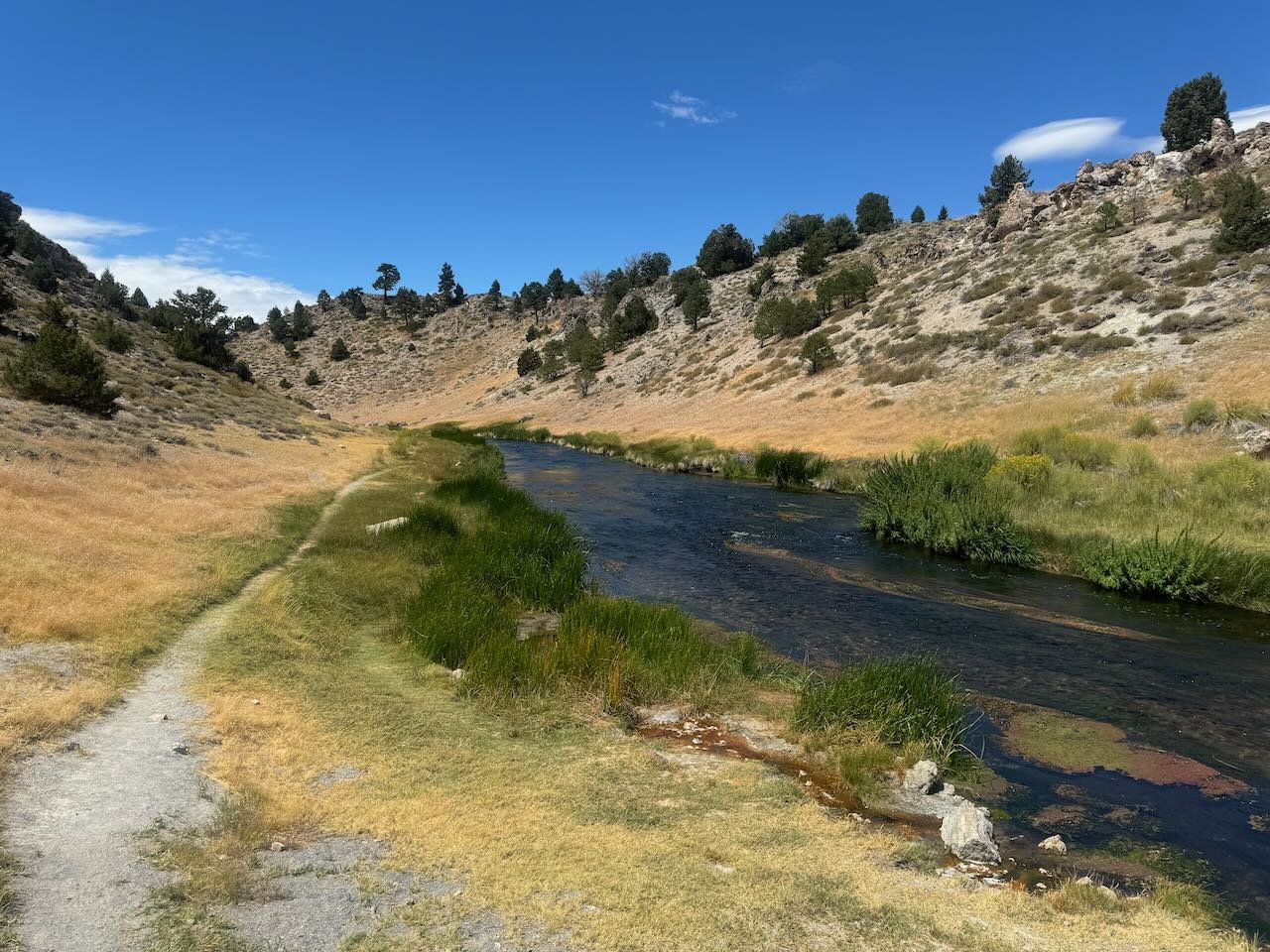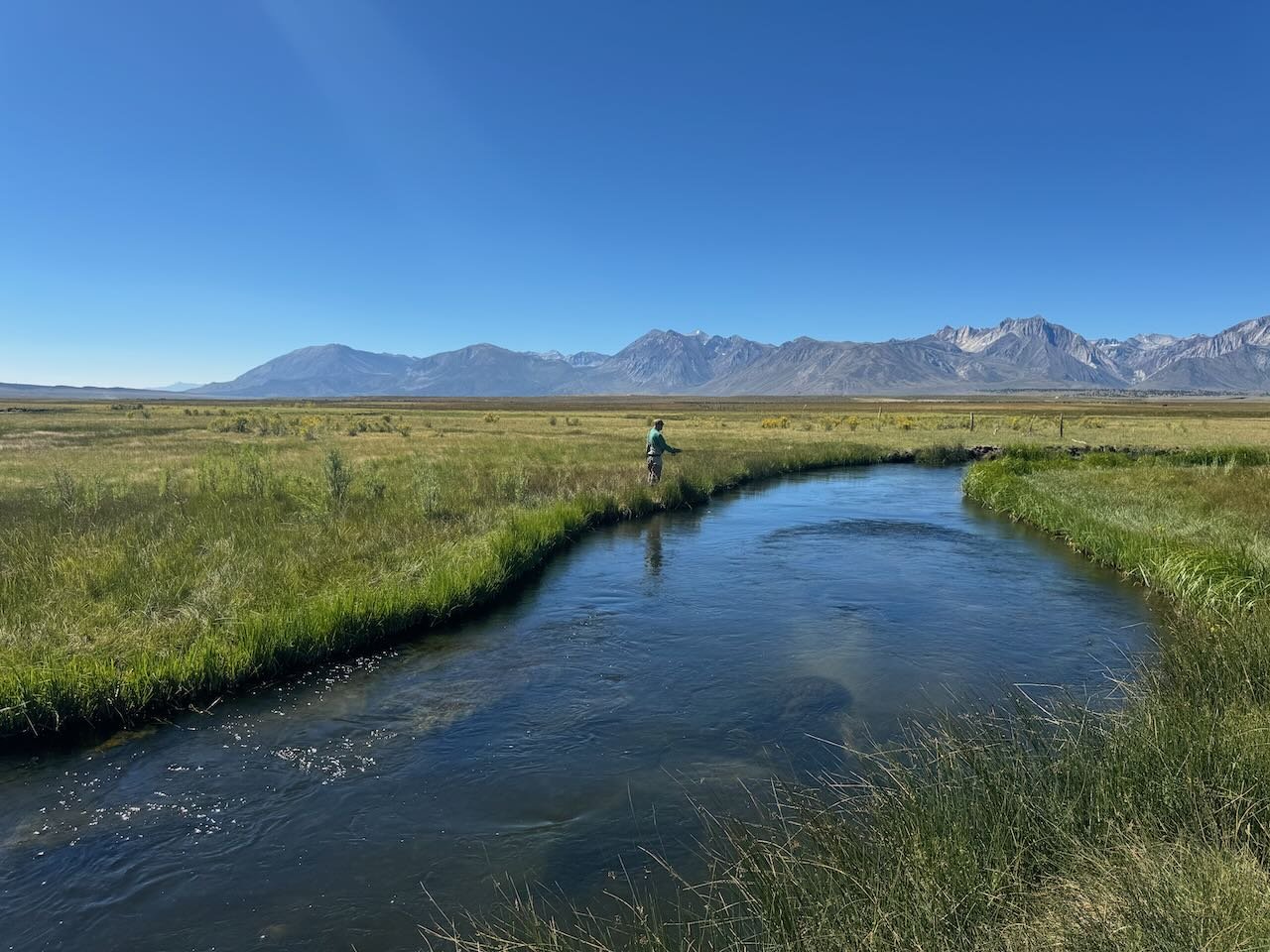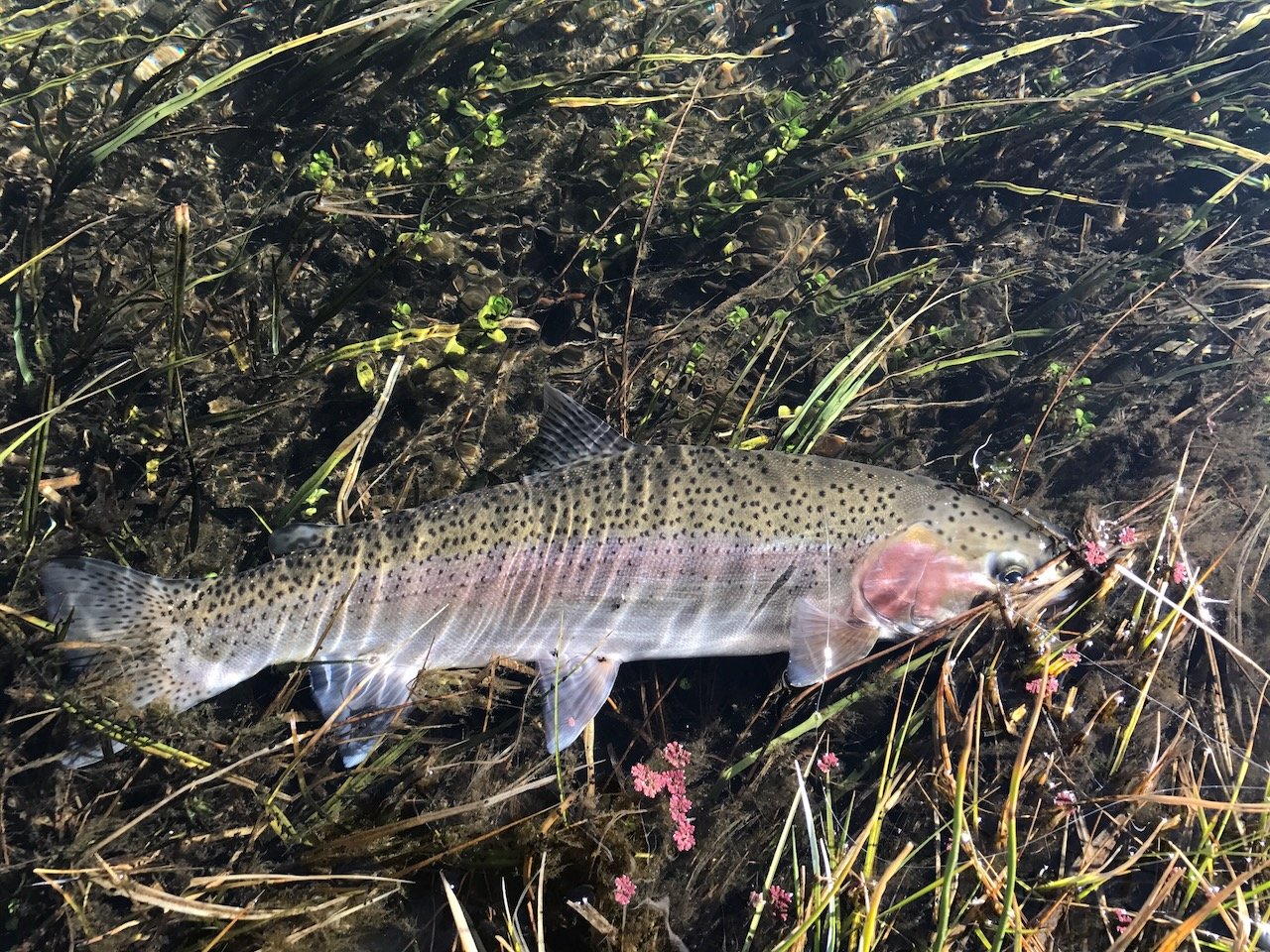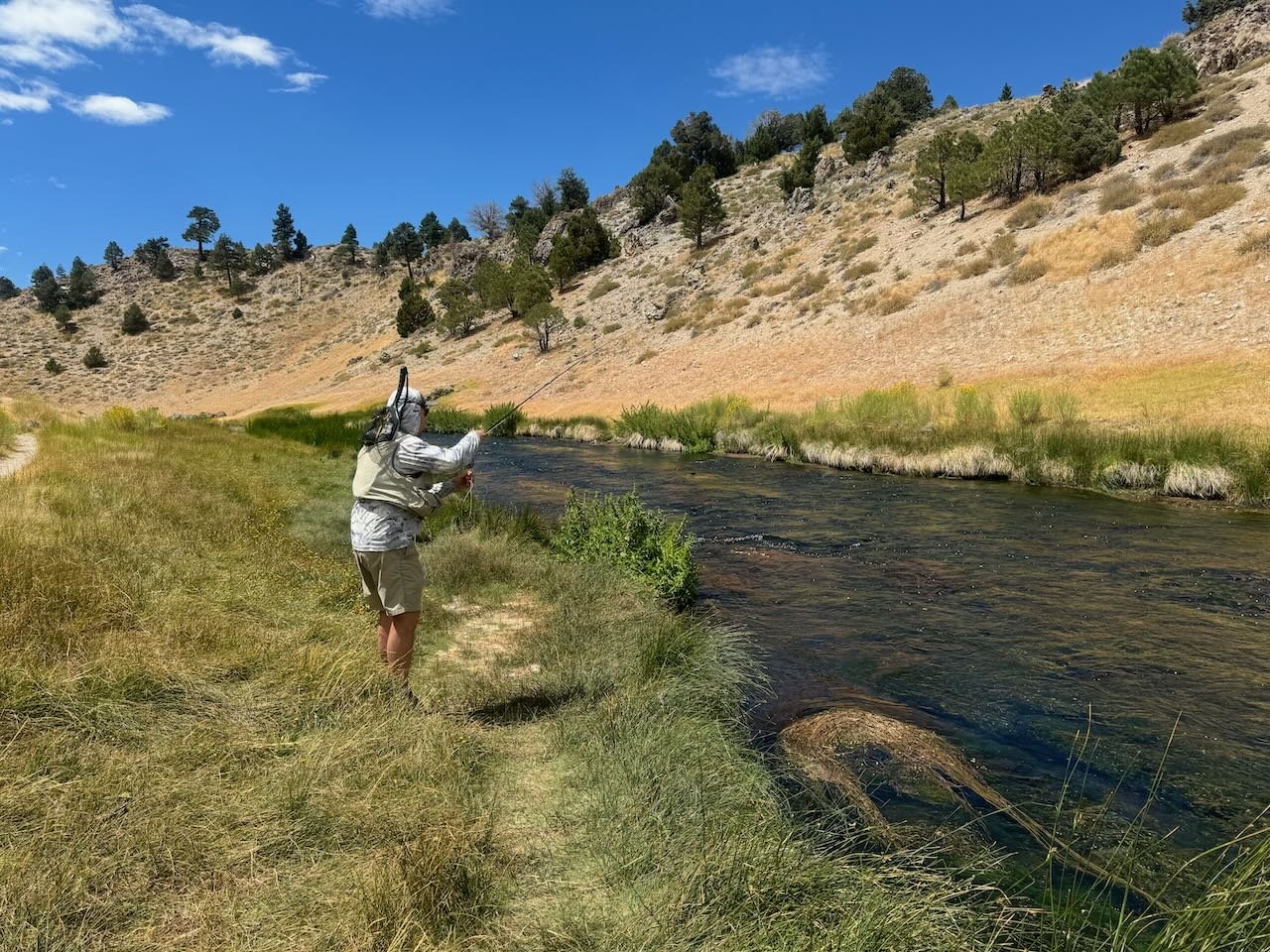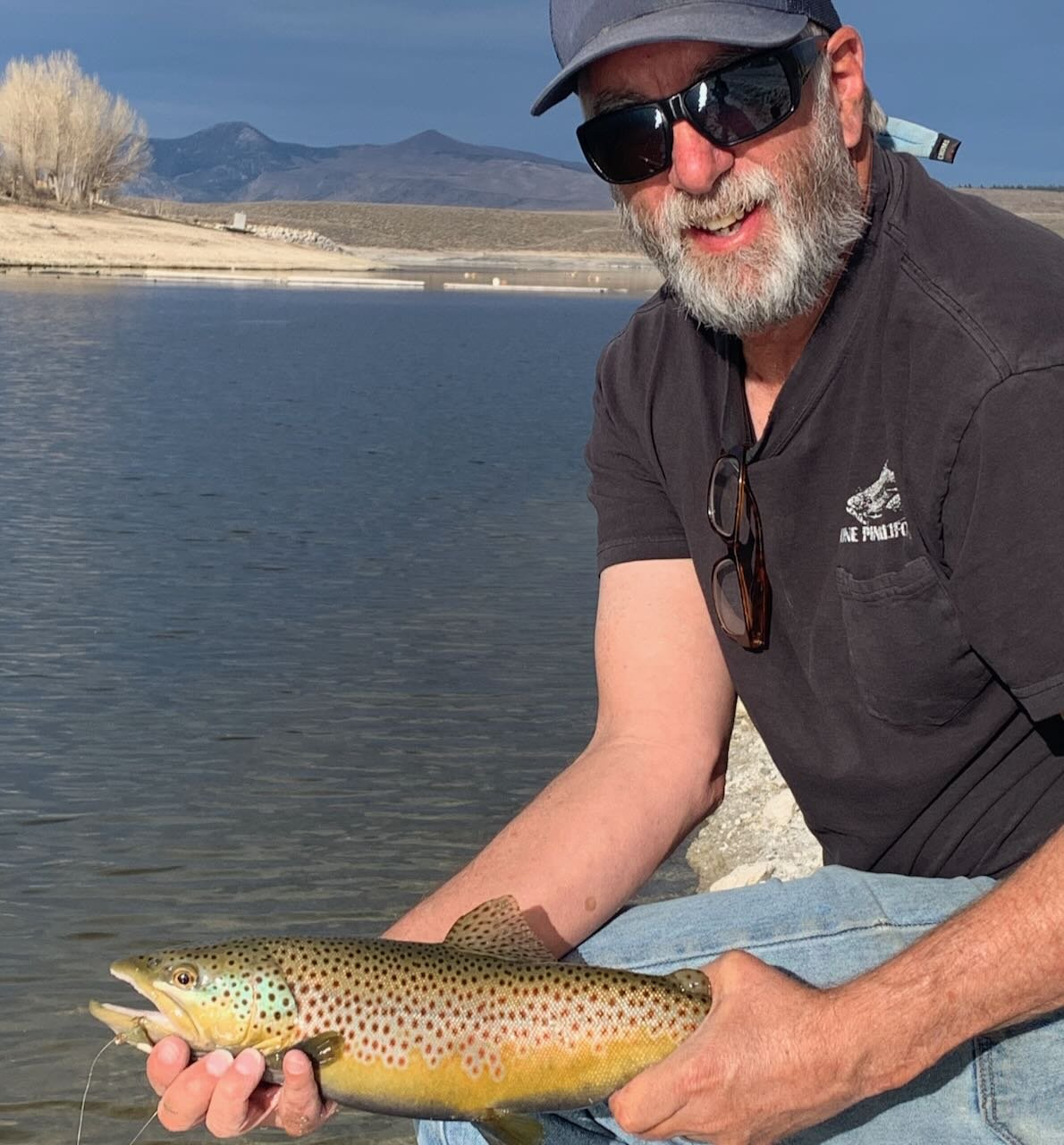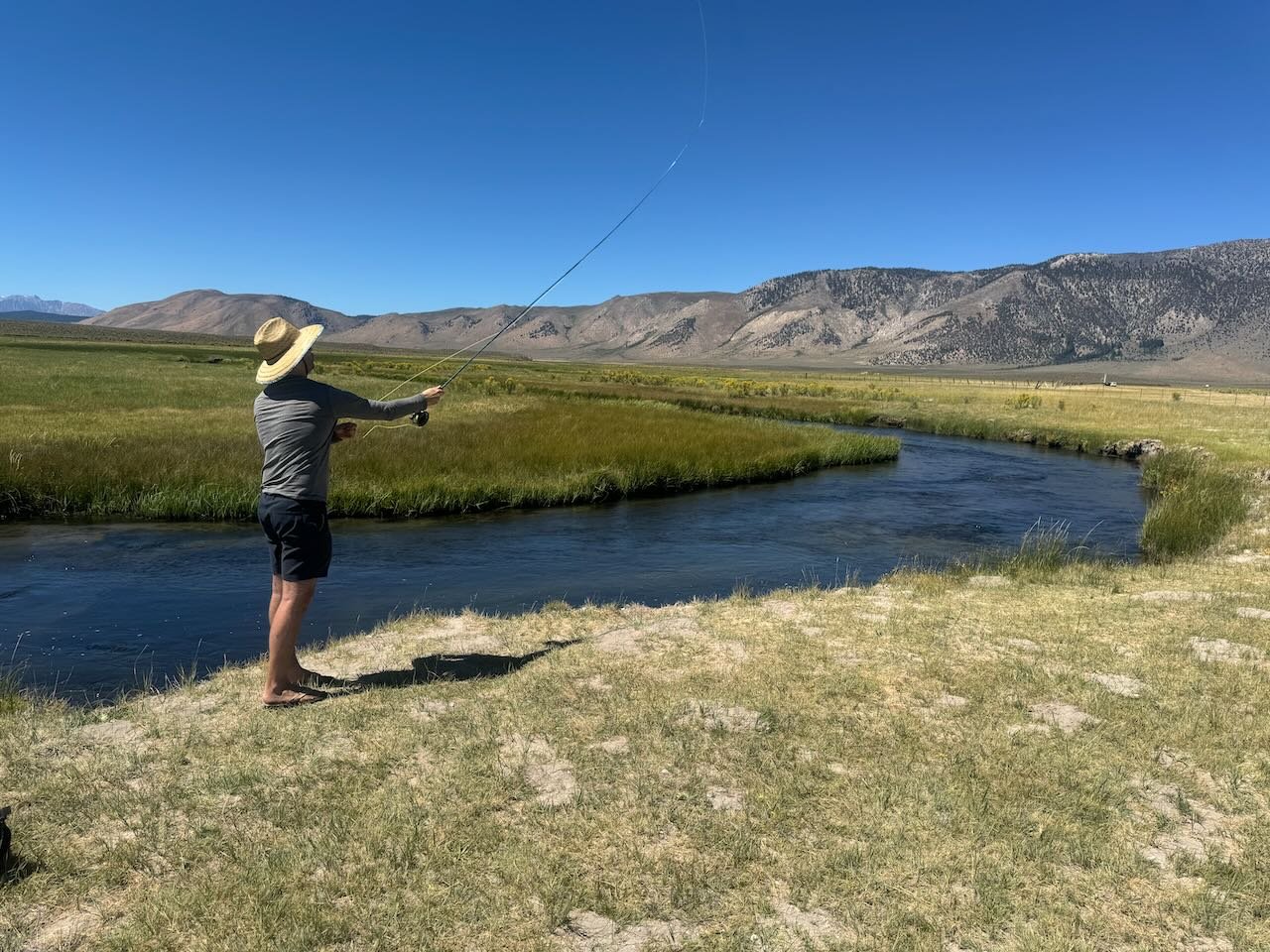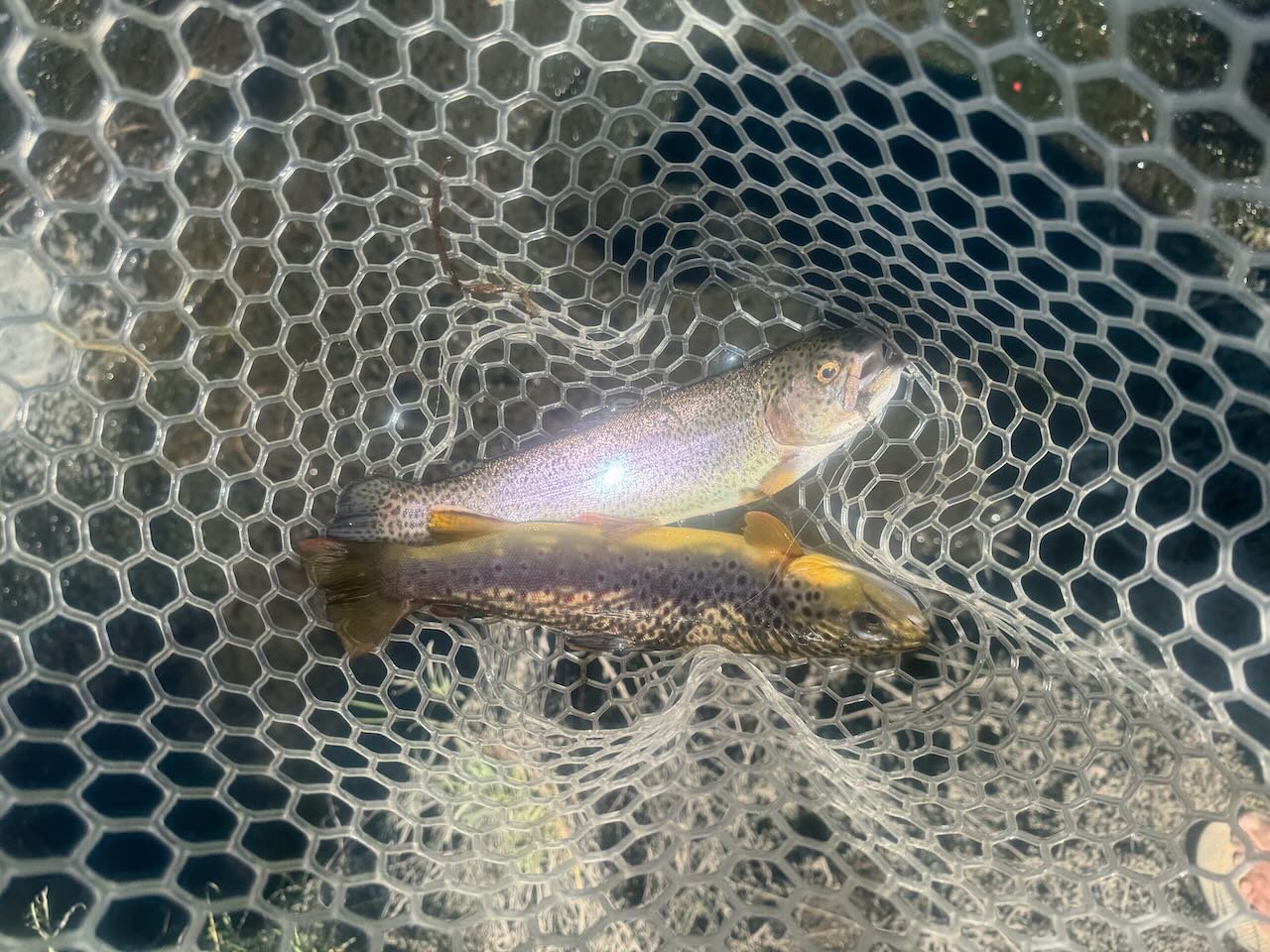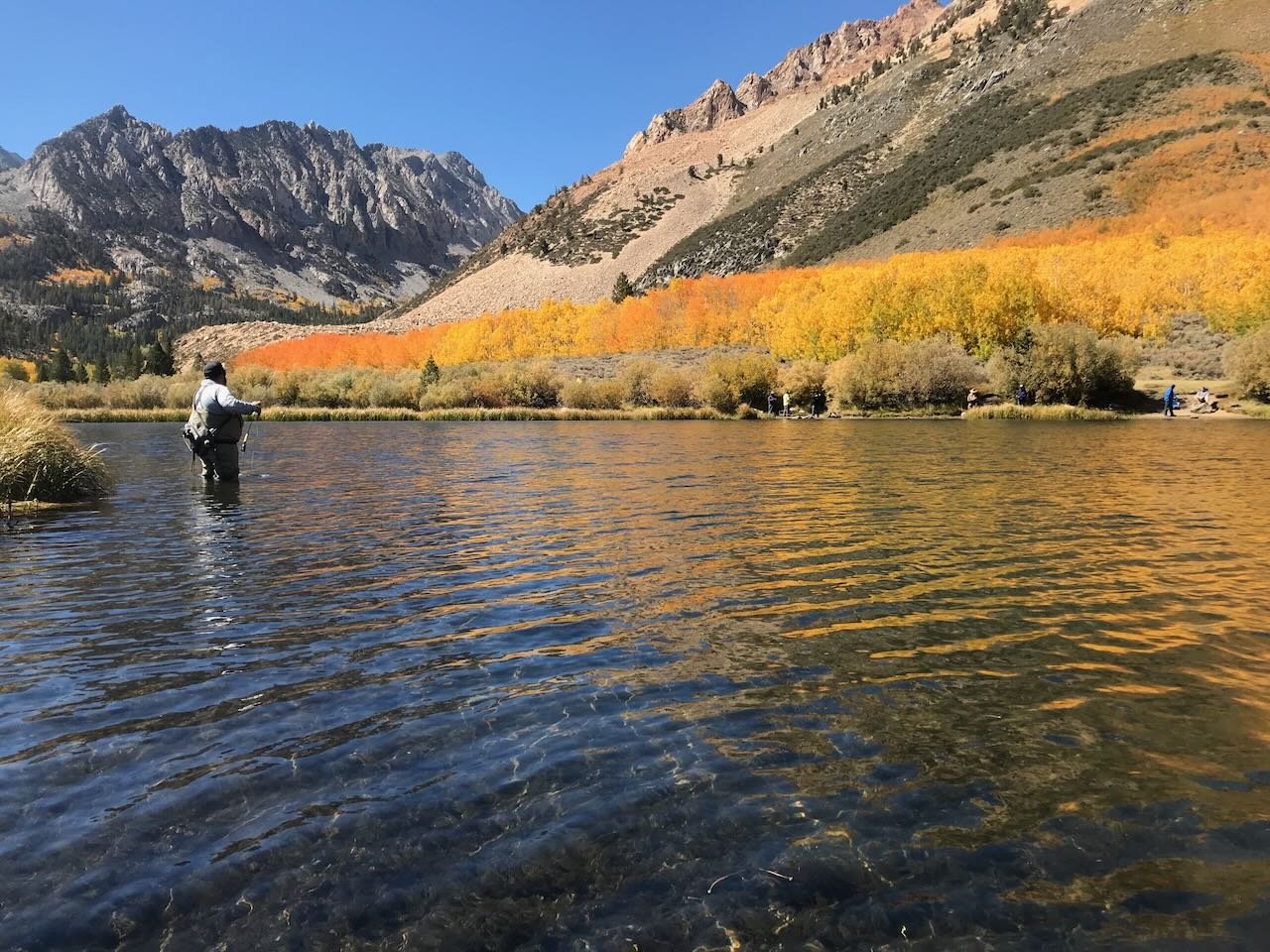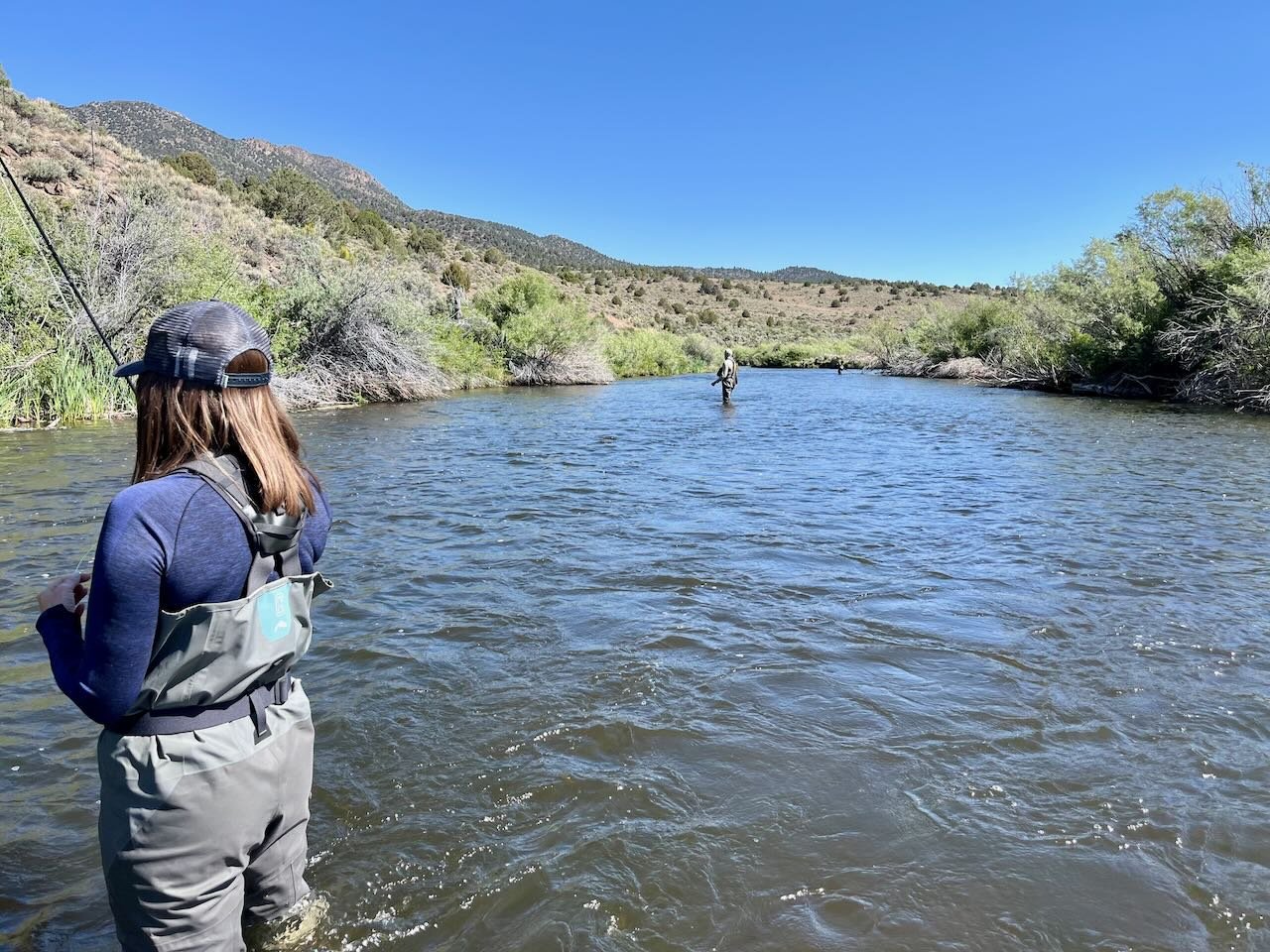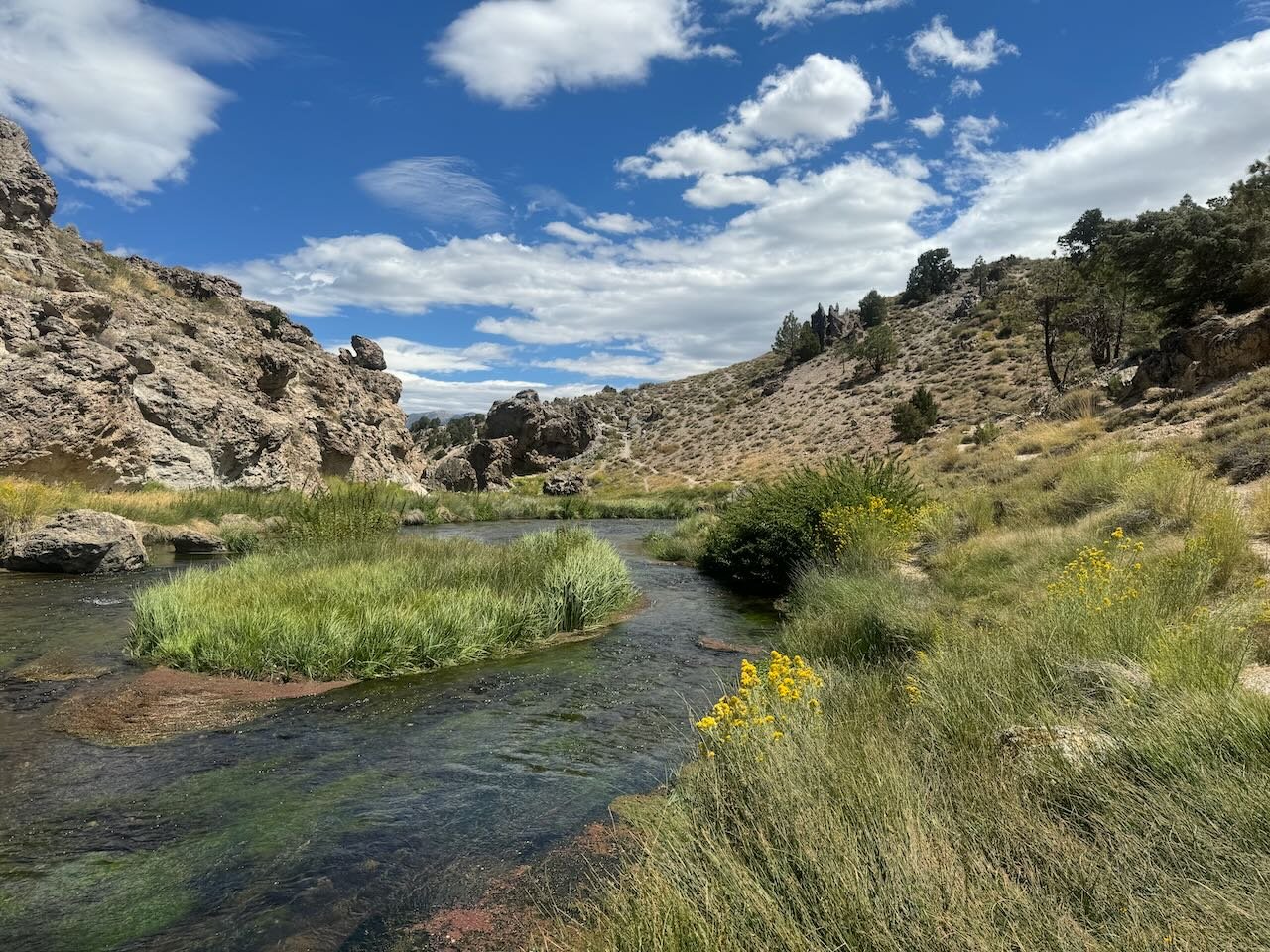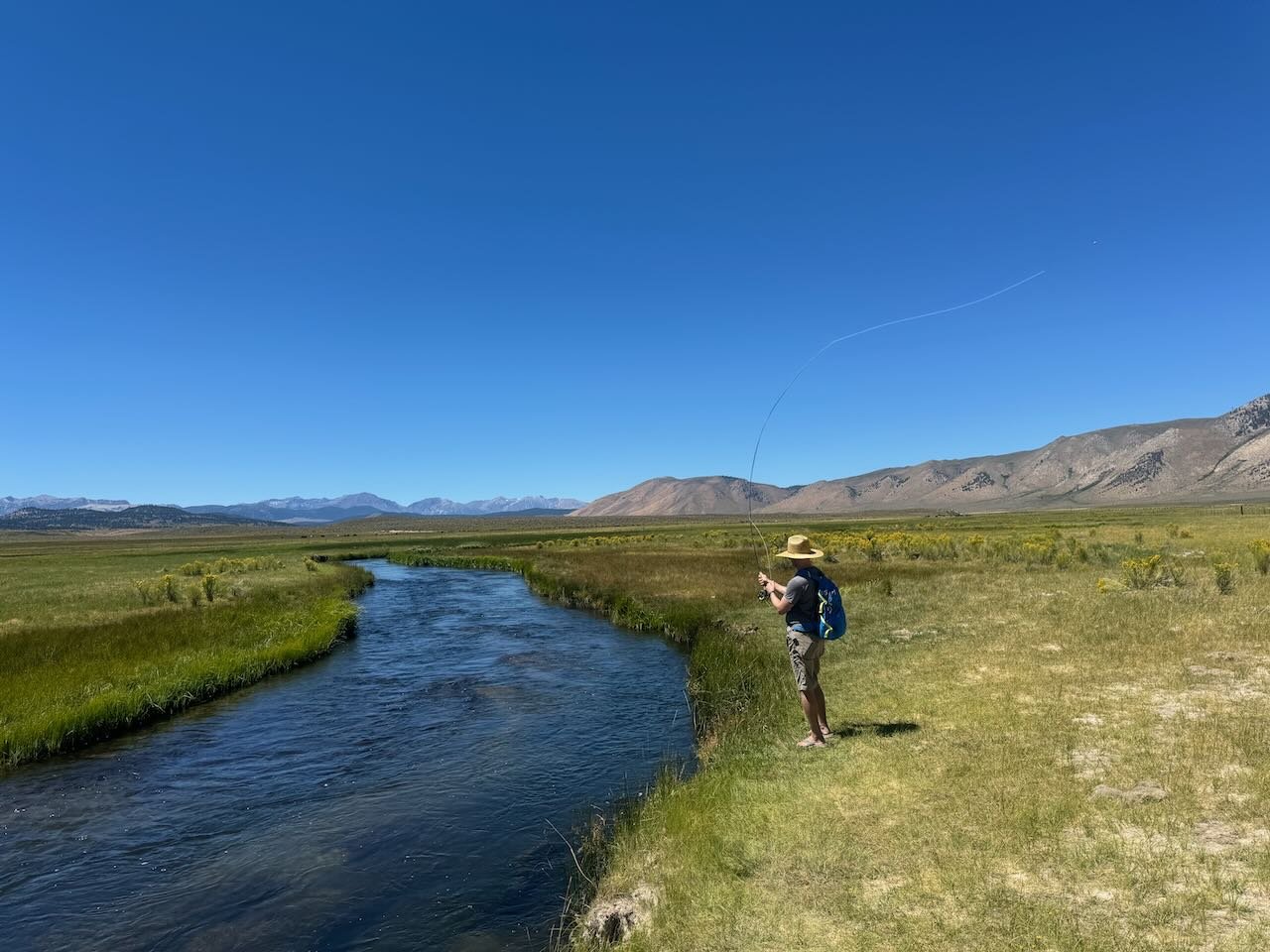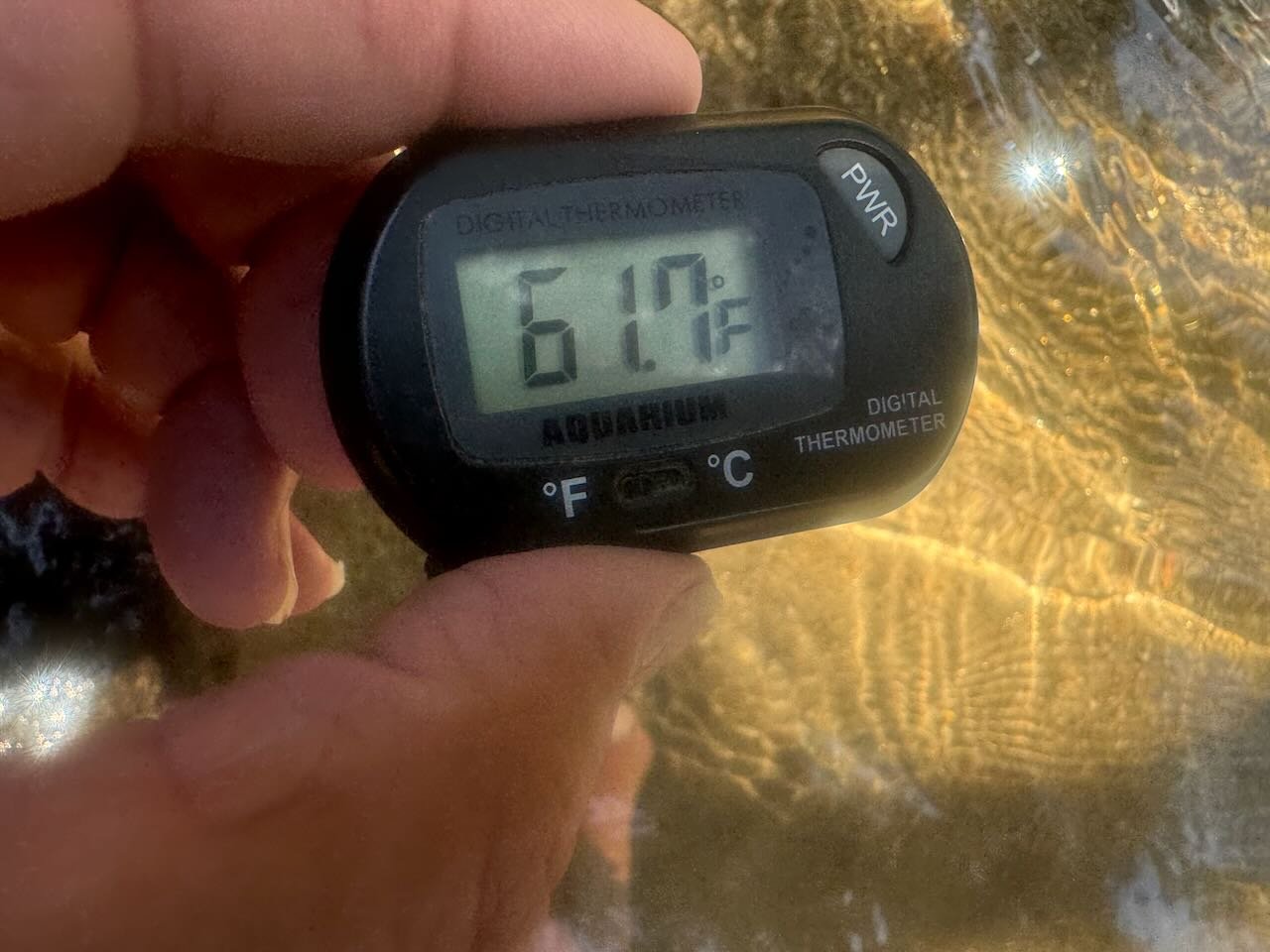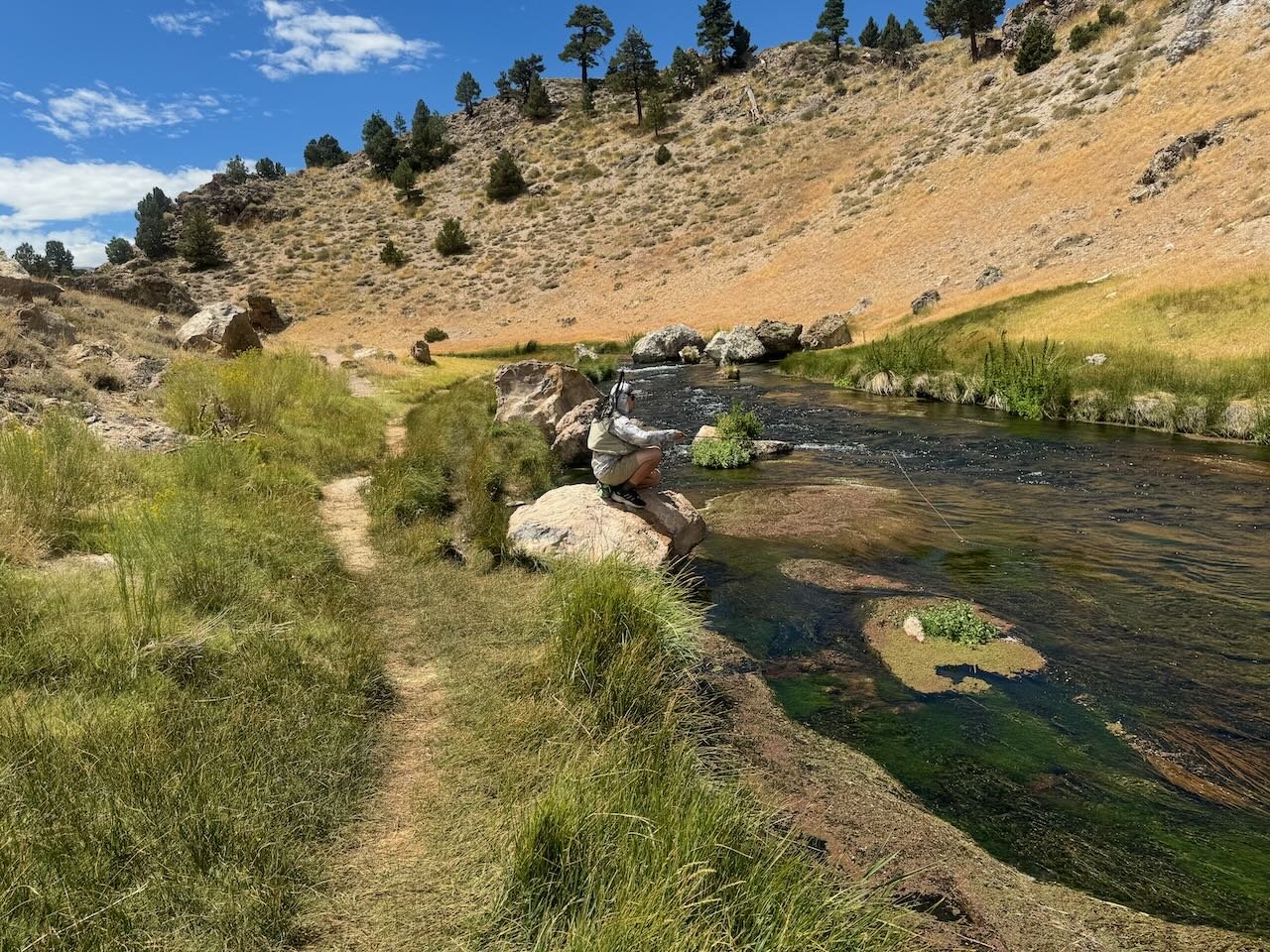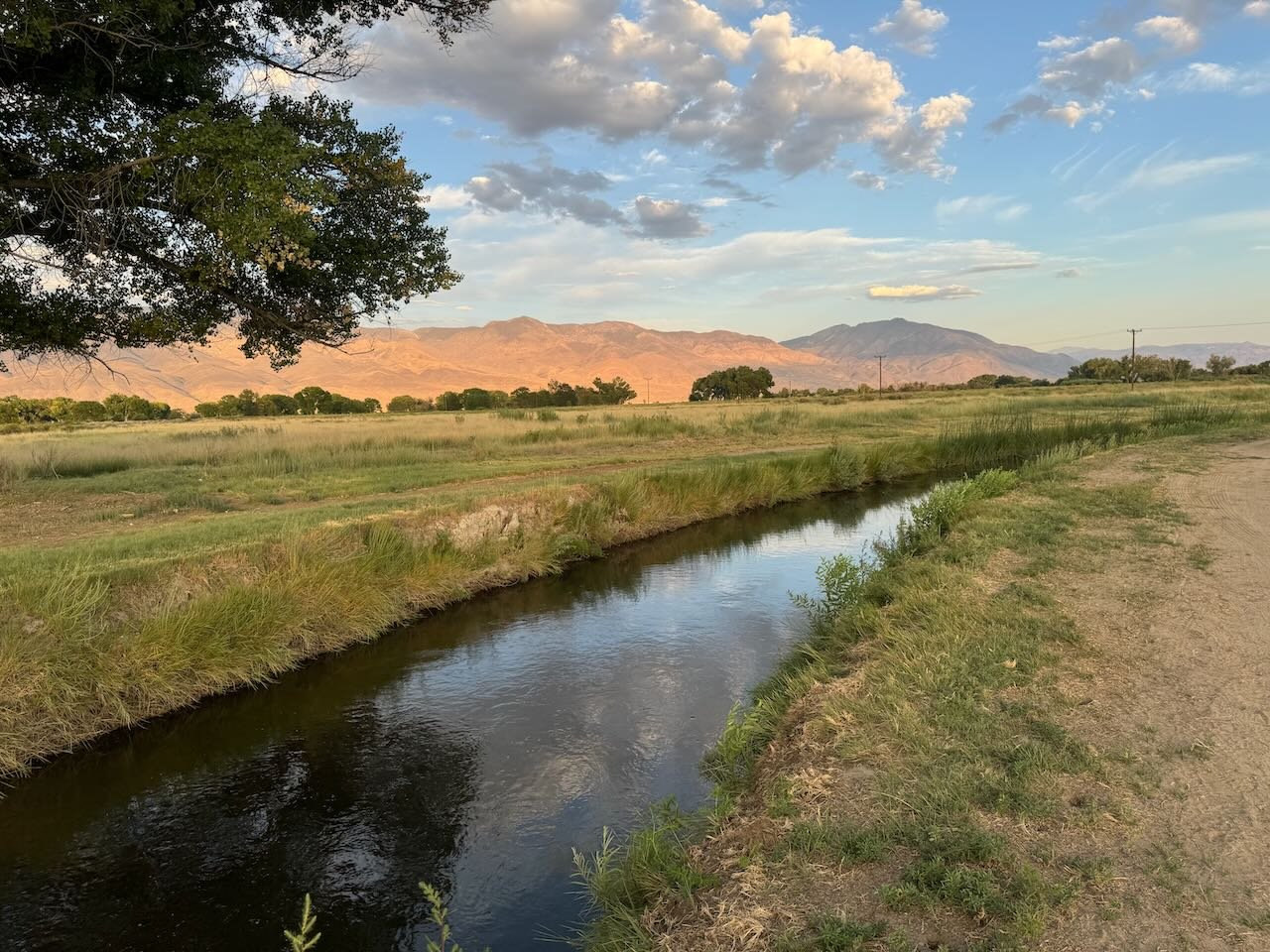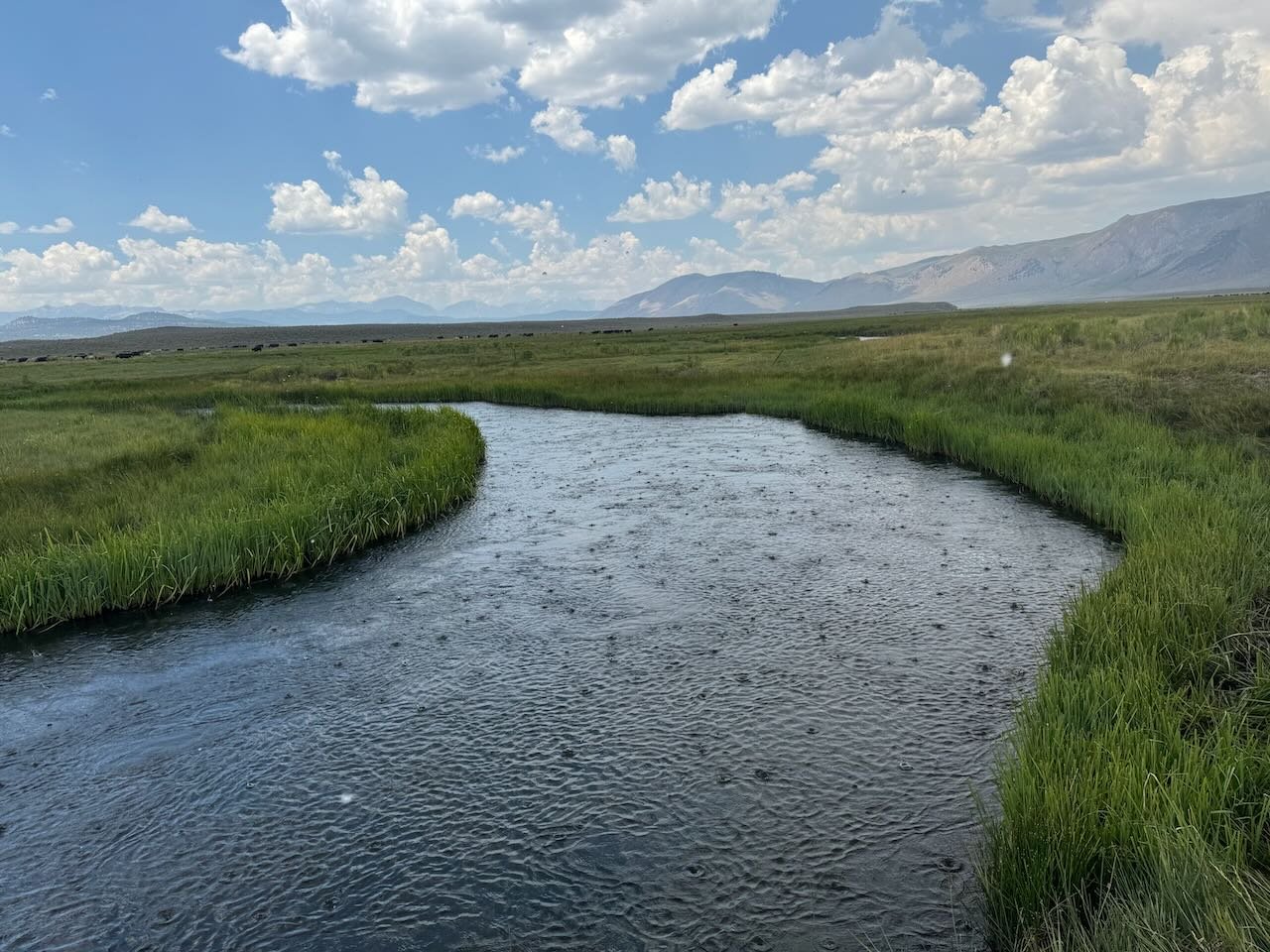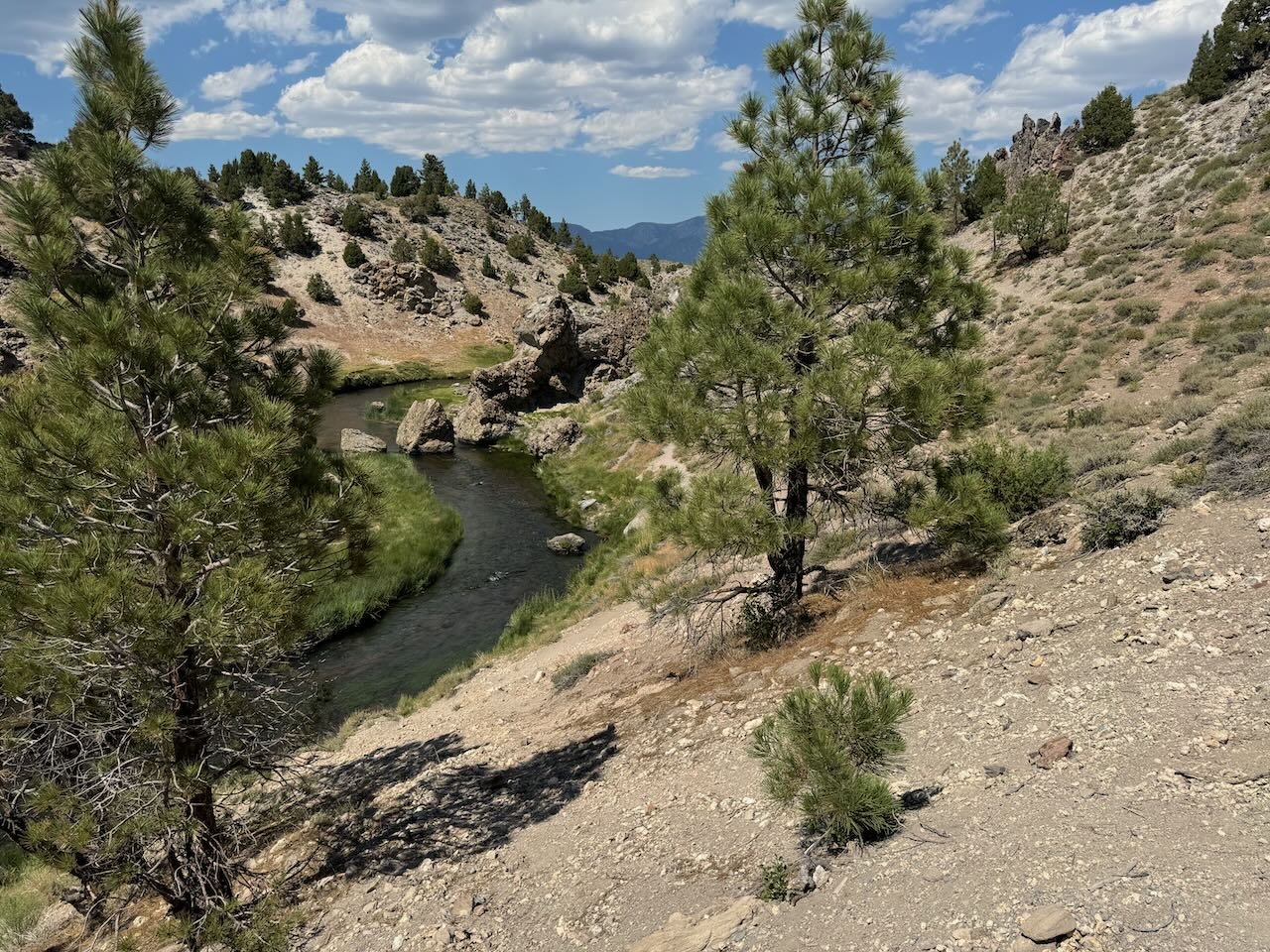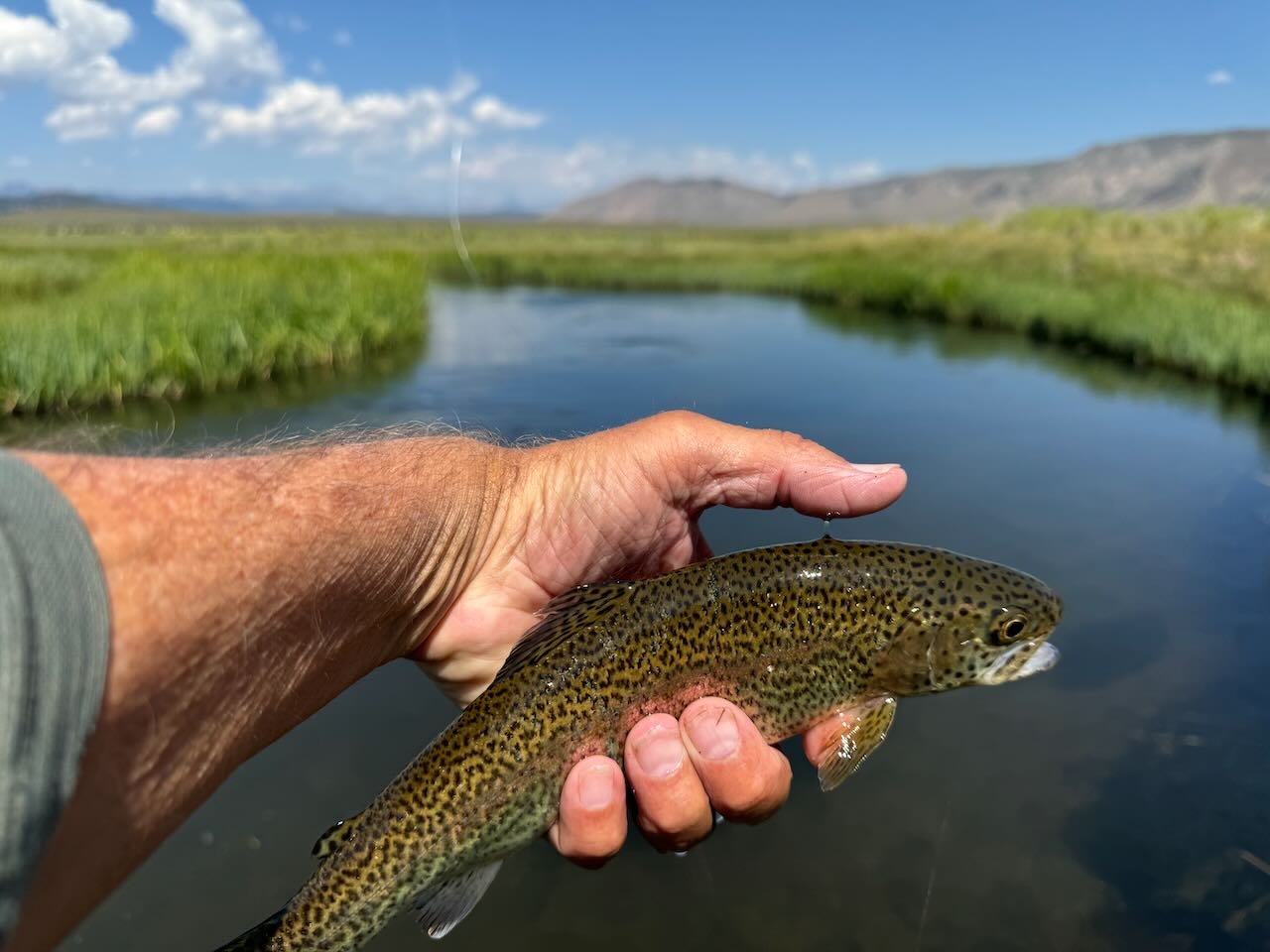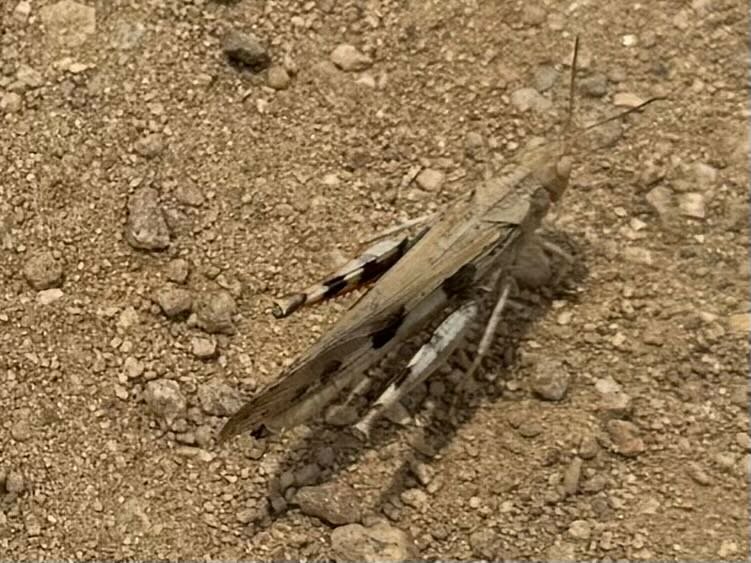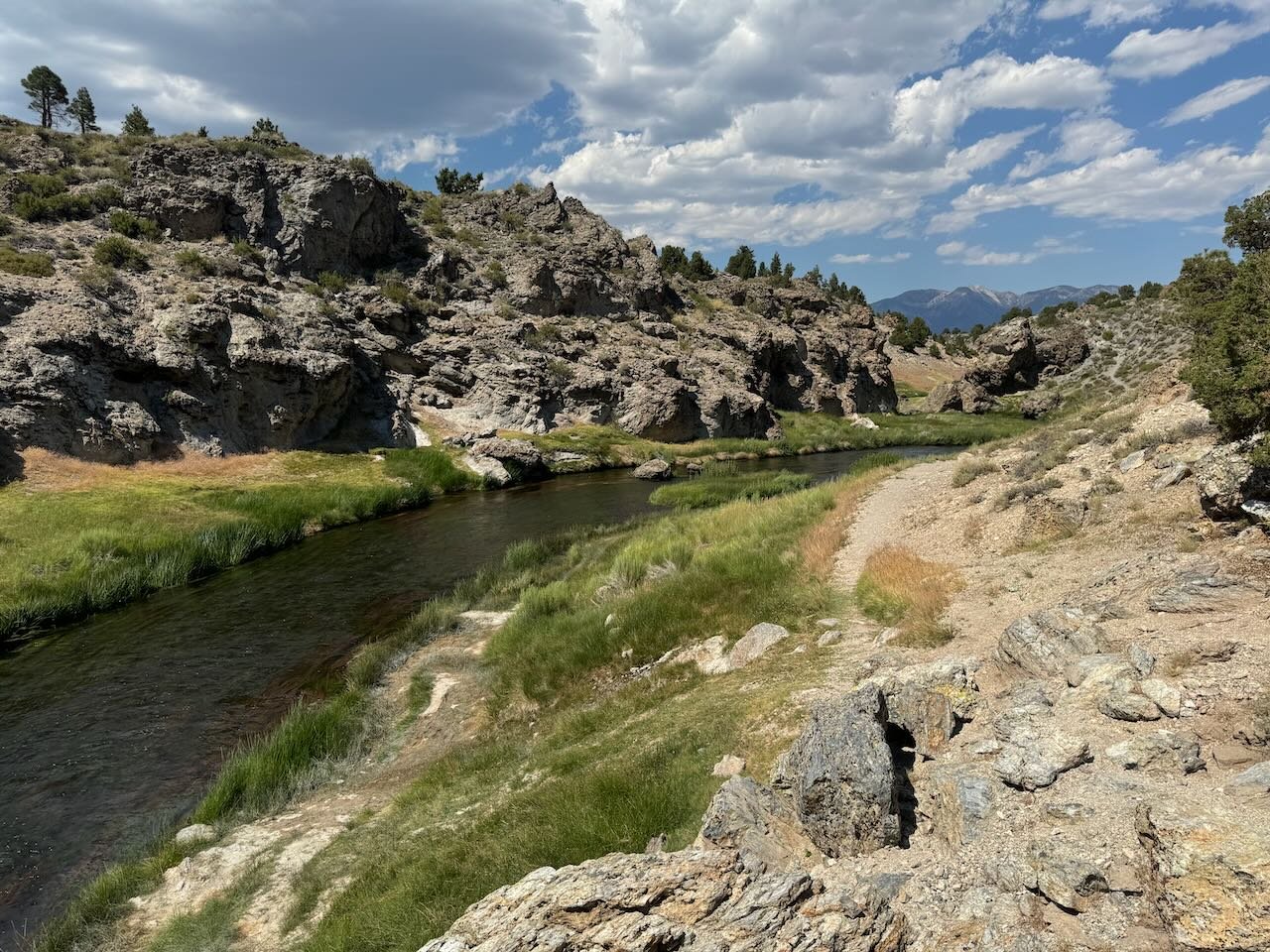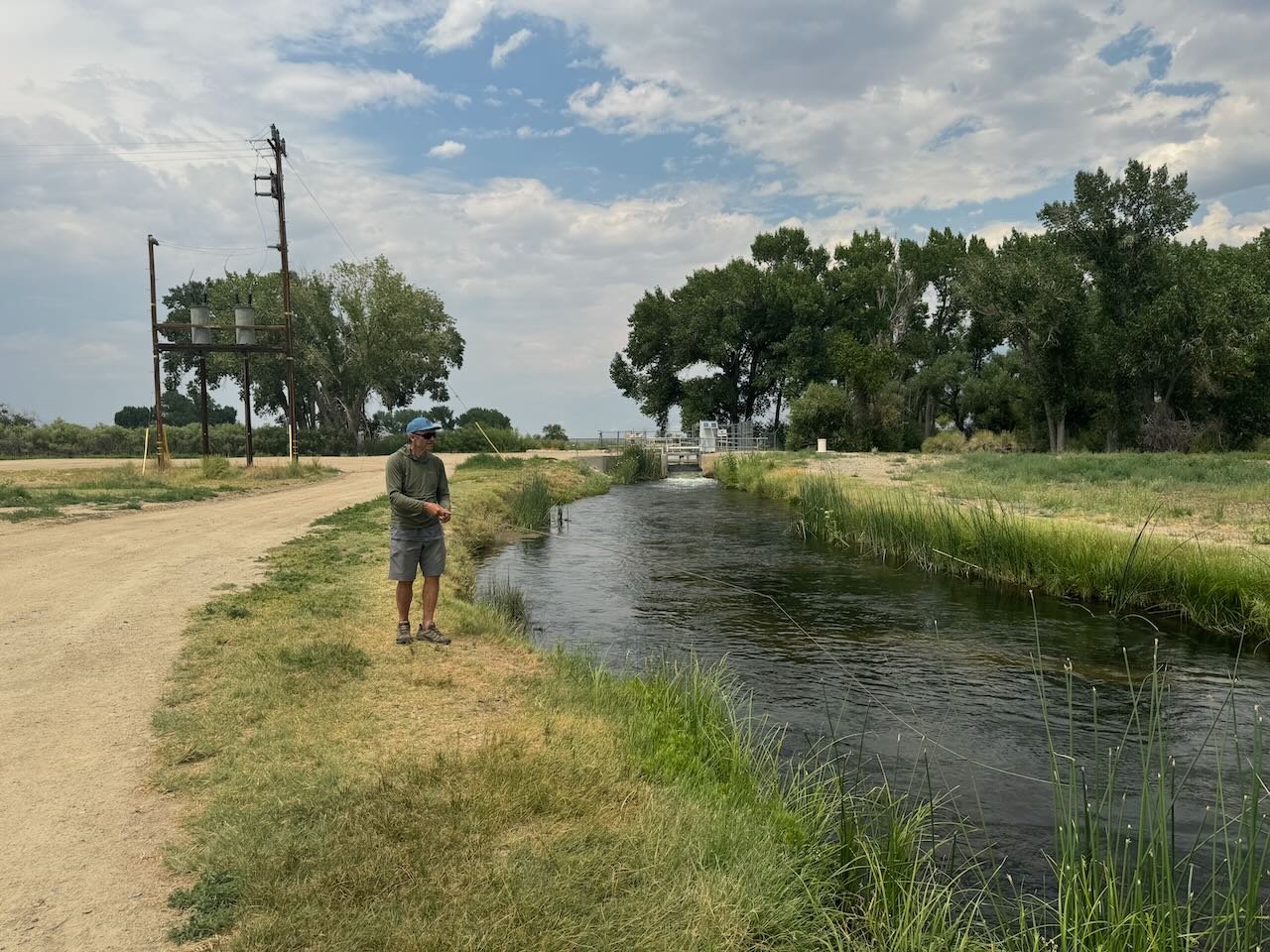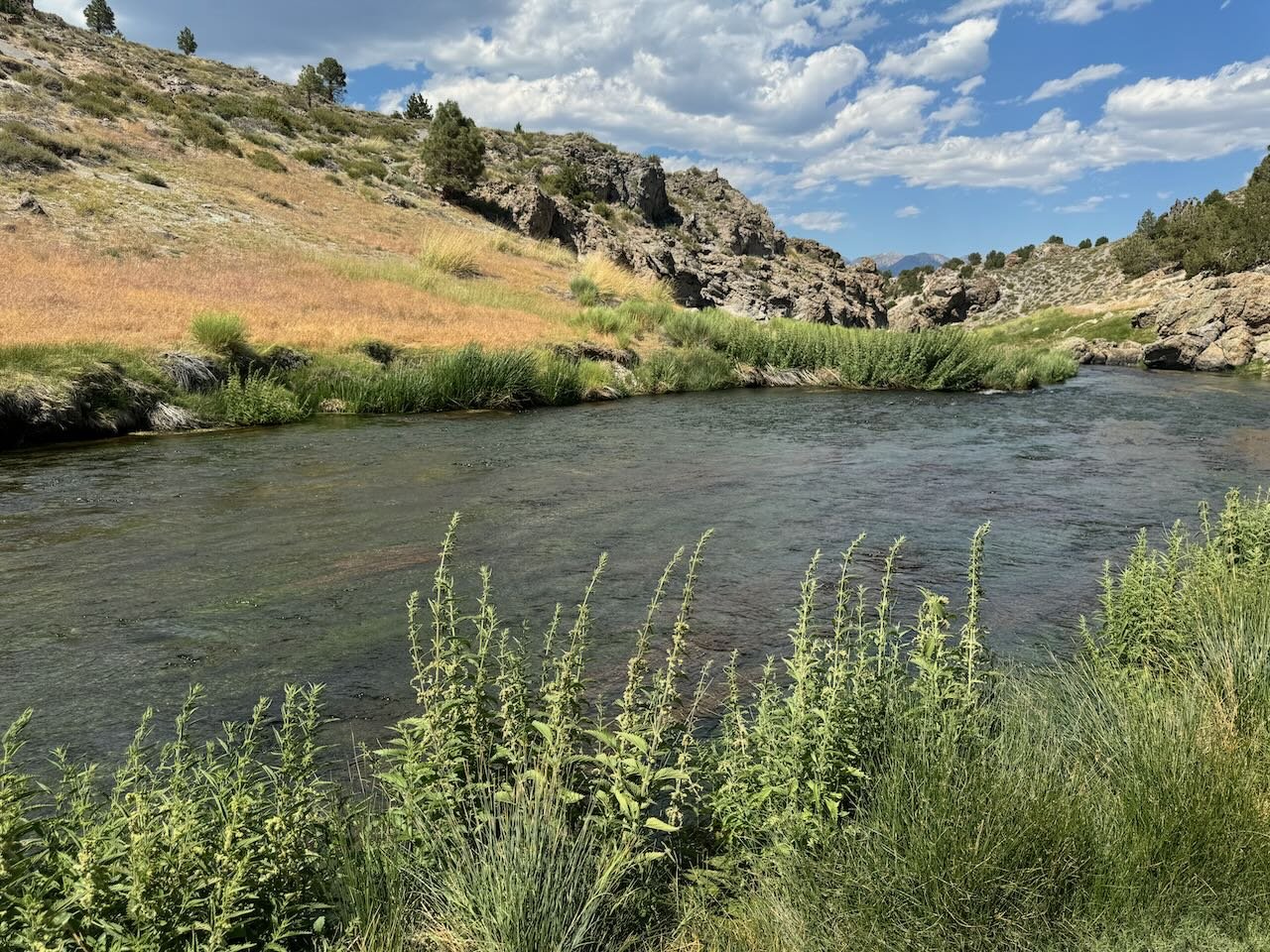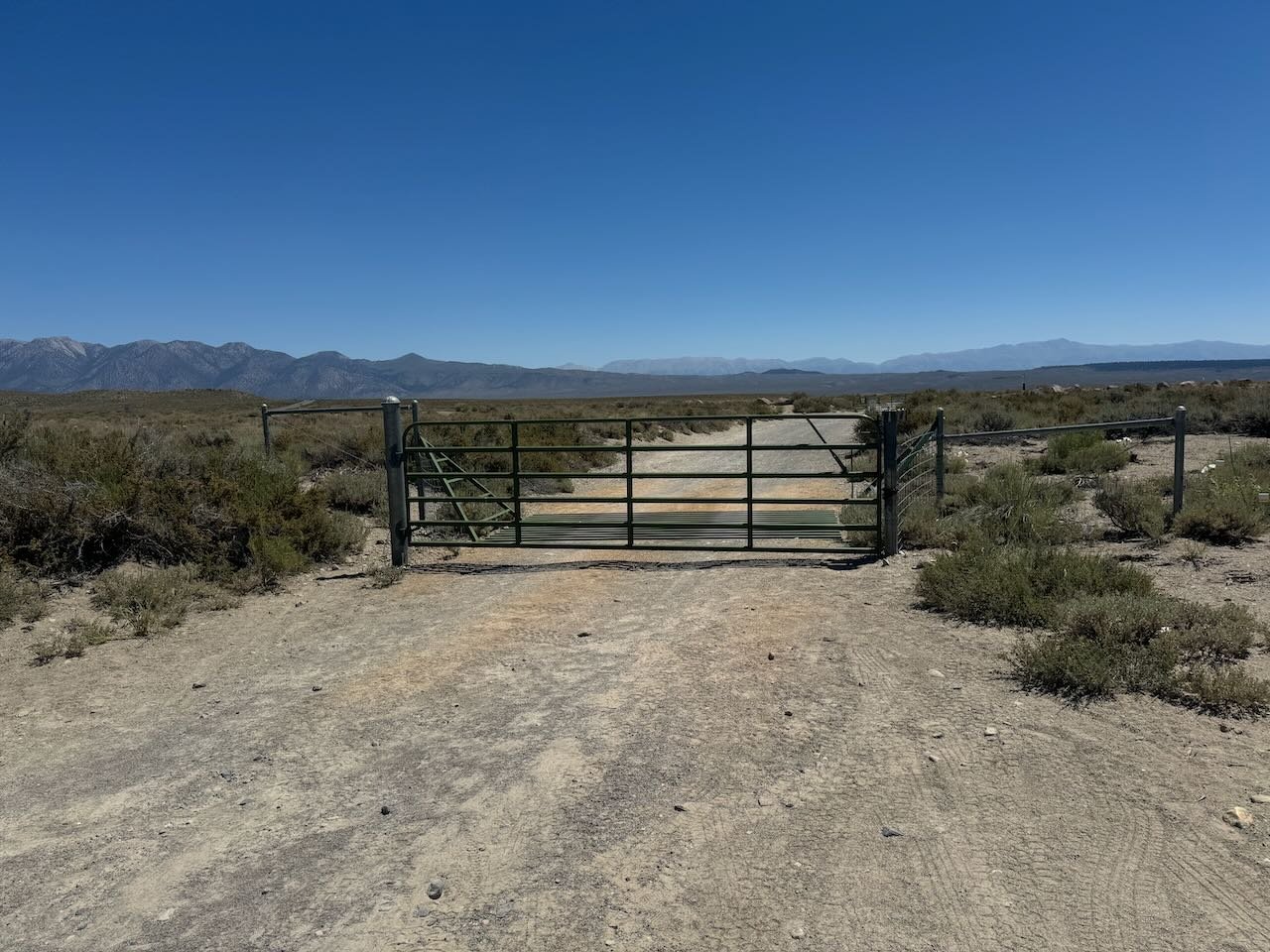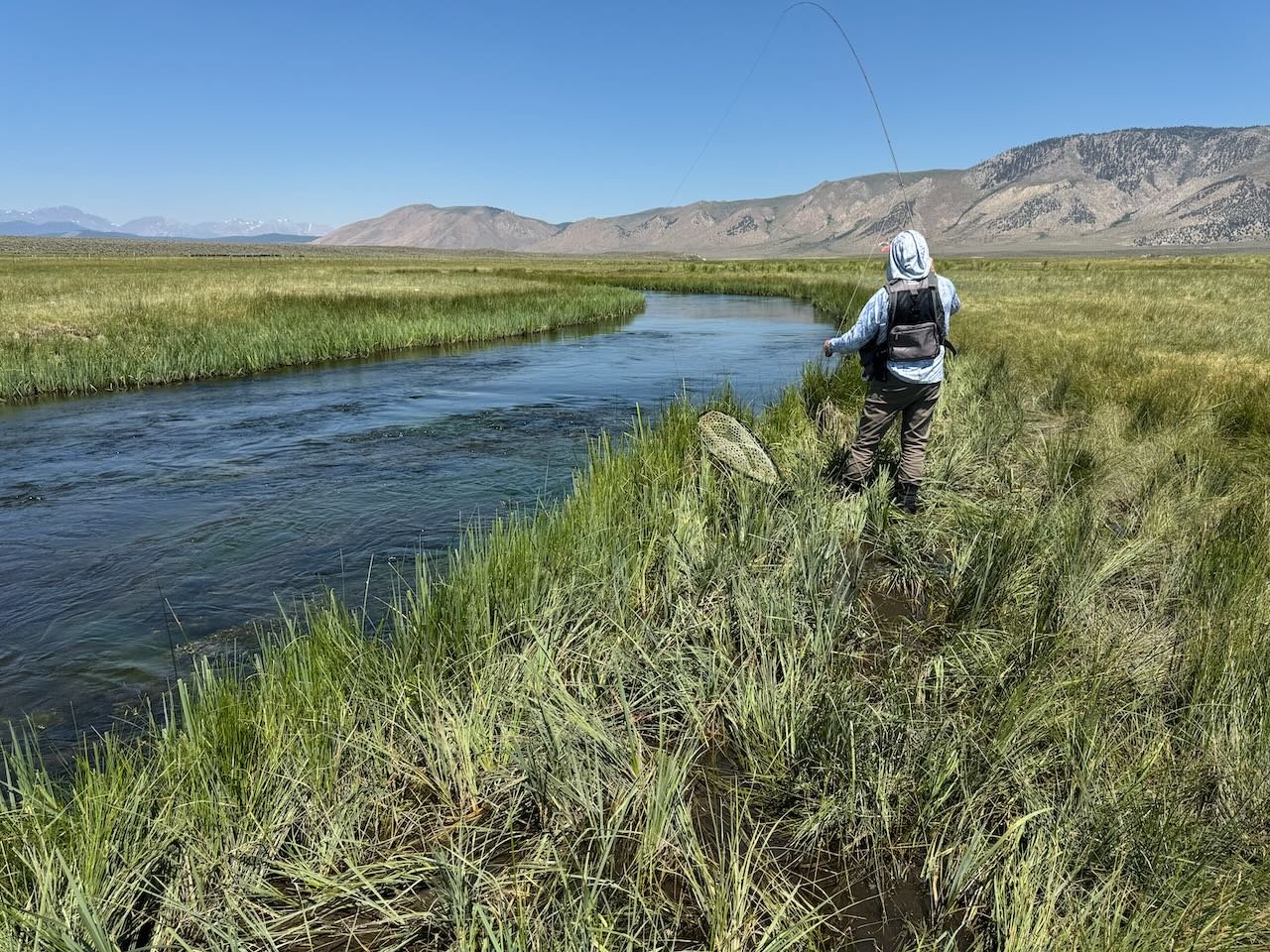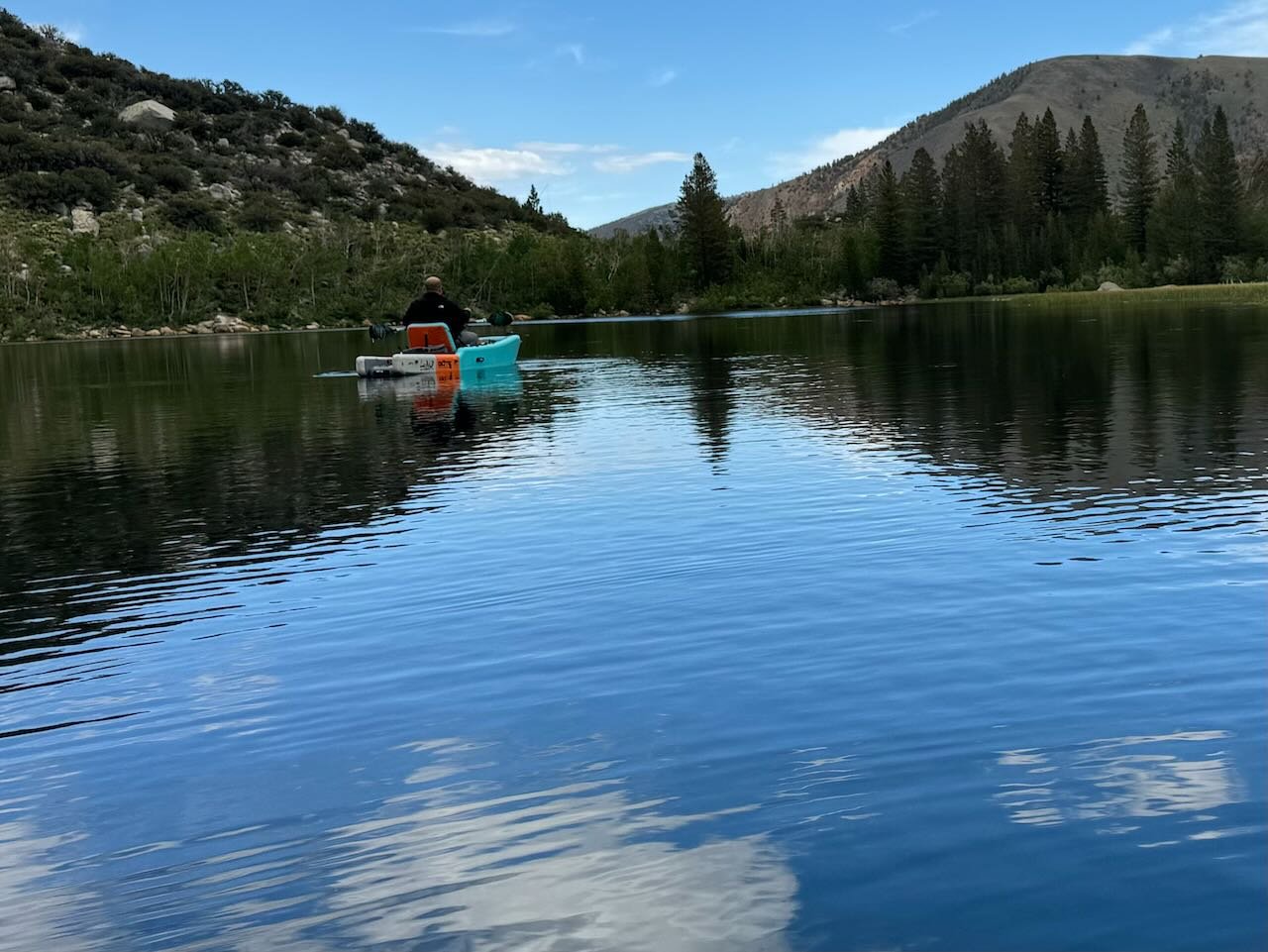Winter showed up this week with higher elevation areas getting the first dusting of snow on the peaks of the Eastern Sierra. Next week we are expected to heat back up to normal September day time temperatures. Indian summer is the period between the first storm of the year and when snow sticks and piles up tell it starts melting in spring. I always hope for a long and warm Indian summer to finish off fall. Now is the time to get in that last minute upper elevation fly fishing trip. Trout are feeding on the nymphs and hatching midges, mayflies and caddis flies. Throwing big articulated streamers is a great way to entice a trophy trout to take your fly pattern. Now is the perfect time for a fall fly fishing trip to the Eastern Sierra. Richard and I have openings in September and October.
The first storm of the Fall came through the Eastern Sierra leaving a dusting of snow on the peaks.
Hot Creek
Interpretive Site:
With the cooler temperatures this week the hatches are coming off latter in the morning. The hatch starts with a caddis migration up stream. Any caddis that crashes on the water is instantly feed on by the trout. Fish with size 20 gray elk hair caddis, gray parachute caddis or gray X-caddis. The morning trico hatch starts with the hatching of the duns. Fish with a size 20 female parachute trico mayfly. When the trico fall takes place switch to a size 22 trico spinner patterns. After lunch look for a mid-afternoon midge hatch. The trout are feeding on midge pupae and hatching adults. Use a size 22 tiger secret midge, Olsen’s CDC midge and gray CDC midge.
Trout in Hot Creek are hanging out in between the weed beds feeding on the hatching mayflies, midges and caddis.
Hot Creek
Canyon Section:
Cooler weather and less sun is helping the weed beds in the canyon to reduce in size. This is making it easier to work nymphs in the holes and slots between the weed beds. Fish with size 22 tiger midges, zebra midges, size 18 olive quilldigons and size 18 bead head flash back pheasant tail nymphs. Best fishing has been in the mornings with dry flies. Fish with size 20 gray parachute caddis, elk hair caddis, X-caddis, size 22 female dun parachute trios and trico spinners. Mid-afternoon use midge emergers or midge adults. Fish with a size 20 to 24 Olsen’s CDC midge, gray CDC midge and a tan secret midge.
Crowley Lake fly fishers are now concentrated in the north arm of the Owens River area of the lake.
Crowley Lake
Mouth of the Owens River:
All the fly fishers have given up in McGee Bay and are now fly fishing the north arm of Crowley Lake. The lake level has dropped to levels that fly fishers are used to seeing on the lake in the fall. Weed beds are being left high and dry on the lake bed as the water recedes. Throwing streamers in and around the remaining weed beds is producing trophy trout on matukas and balanced perch patterns. Midging with Albino Barron’s, gray midges, blood midges, zebra midges and tiger midges continues to be producing trout in 10 to 25 feet of water.
A typical upper Owens Rainbow that took an SOS nymph on a three fly Euro rig.
Upper Owens River
Above Benton Crossing Bridge:
A few trophy rainbows are in the upper Owens River taking streamers and nymphs. Fly fishers covering lots of deep holes, deep runs and cut banks are hooking up with size 12 stoner nymphs, size 12 green/gold wire Prince nymphs, olive quilldigons and hot spot pheasant tail nymphs. There are good numbers of four to 12 inch wild brown and rainbow trout feeding on mayfly nymphs and emerging midges. The midge hatch starts around 10:00 A.M. and runs through 2:00 P.M. Fish with size 20 to 24 tan secret midge, Olsen’s CDC midge in tan and tan CDC midges. Nymphing under an indicator or with a Euro rig is producing trout when using size 16 SOS nymphs, size 18 bead head flash back pheasant tail nymphs, size 16 bead head flash back gold ribbed hare’s ears, size 20 to 24 tiger midges and zebra midges. Afternoon winds makes it hard to cast the fly rod, but if you can get your nymphs on the water the trout are feeding.
While a storm brews in the upper elevations of the Sierra Nevada it’s a perfect day for fly fishing on Bishop Creek Canal.
Bishop Creek Canal
Behind Bishop Veterinary Hospital:
Cooler day time temperatures makes fly fishing the canal pleasant. Nymphing with an indicator or a Euro rod is the best method of fly fishing the canal. Size 18 bead head flash back pheasant tail nymphs, size 16 bead head flash back gold ribbed hare’s ears, size 18 olive quilldigons and size 14 hot spot peasant tail nymphs are the nymphs the trout are feeding on. Dirty colored water has slowed down the nymph bite.







